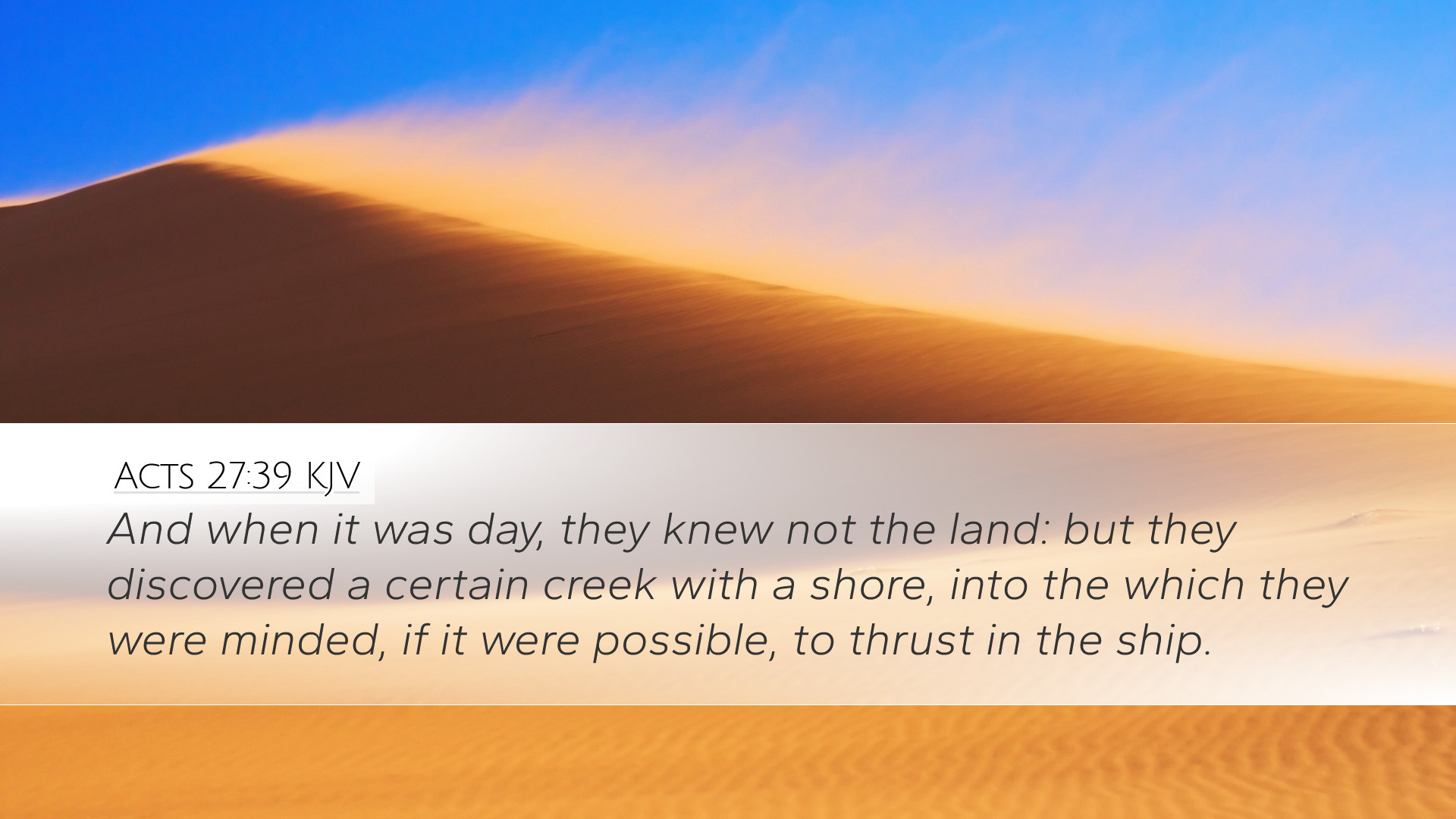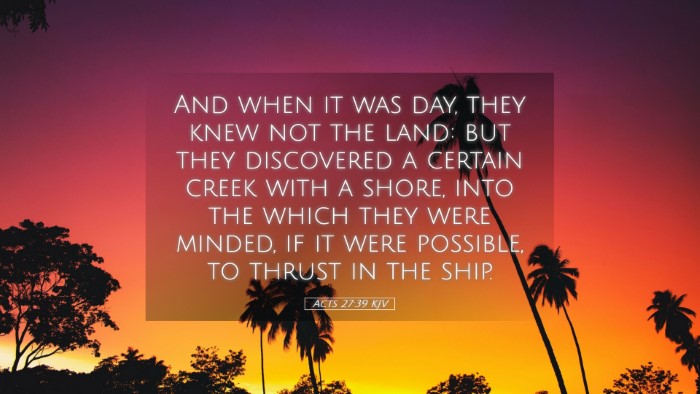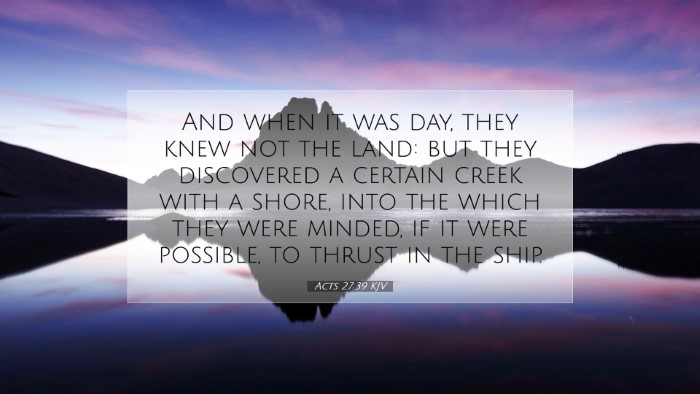Commentary on Acts 27:39
Acts 27:39 states, "When it was day, they did not recognize the land; but they noticed a bay with a beach, on which they planned, if possible, to run the ship aground." This verse marks a pivotal moment in the narrative of Paul's journey to Rome, accentuating themes of divine providence, human uncertainty, and the interplay of faith and reason.
Contextual Background
The context of Acts 27 is crucial as it narrates the perilous journey of Paul as a prisoner en route to Rome. This voyage is characterized by tumultuous storms and shipwreck, illustrating both literal and metaphorical trials faced by believers. Commentators emphasize that Paul's presence on this journey signifies God's purpose being fulfilled, even amidst dire circumstances.
Insights from Matthew Henry
Matthew Henry notes that the daybreak represents a moment of clarity, contrasting the previous night’s despair. He writes, "The darkness of the night was a time of great distress; but with the light of the day came hope, as they glimpsed the land." Here, Henry draws a parallel to the believer's journey, where moments of darkness give way to divine revelation and hope.
Recognition of the Land
Henry outlines the notion that the crew did not recognize the land as a symbol of spiritual awakening. He comments on how Christians often navigate their lives without clear vision, but when God intervenes, they receive direction. The unrecognized land highlights the mystery of God's plans which often unfold unexpectedly.
Insights from Albert Barnes
Albert Barnes provides a more pragmatic view, focusing on the geographical and nautical aspects of the text. He discusses the significance of the bay with a beach, elaborating that it offered a practical solution for the beleaguered crew. Barnes states, "It was critical for the sailors to identify a safe harbor, representing the necessity of wisdom in crisis."
Navigating Challenges
Barnes emphasizes the importance of making wise decisions amidst uncertainty. He suggests that the crew's plan to run the ship aground illustrates the need for practical solutions that align with God’s plan. The act of grounding the ship metaphorically speaks to the believer's reliance on God’s guidance during tumultuous times.
Insights from Adam Clarke
Adam Clarke presents a theological interpretation that underscores God's sovereignty. He notes, "The apparent chaos of the storm was harnessed by divine providence to guide Paul and his companions toward safety." Clarke's commentary reflects on the overarching theme of God’s control over nature and human affairs.
Divine Providence
Clarke's perspective invites readers to consider how divine providence operates in the life of faith, especially when faced with seemingly insurmountable obstacles. He points out that even in hopeless situations, God's ultimate plan is being perfected. This theme serves to reassure believers that their trials are known to God and are part of His greater narrative.
Theological Themes
- Divine Providence: The verse serves as a reminder that God's purposes are often revealed in critical moments.
- Human Agency: The sailors acted on their knowledge and circumstances, demonstrating the balance of divine intervention and human responsibility.
- Hope in Despair: The transition from night to day symbolizes hope emerging from despair, akin to the believer's experience of faith.
Application for Pastors and Theologians
This passage offers profound insights for pastors and theologians who seek to address the complexities of faith in uncertain times. The various interpretations from respected commentators provide a rich tapestry of understanding that can inform sermons, discussions, and teachings. In practical application:
- Encouragement of Faith: Pastors may use this scripture to encourage congregations facing crises, reinforcing that God's providence remains, even when the way forward seems ambiguous.
- Discerning God’s Will: The need for practical wisdom amidst trials can guide believers in understanding how to seek and discern God’s will in their lives.
- Hope for the Journey: The transition from night to day can be a metaphorical illustration of the Christian journey, reinforcing themes of hope and redemption.
Conclusion
Acts 27:39 provides a poignant narrative filled with lessons on divine guidance, practical wisdom, and the hope that transcends despair. By integrating the insights of renowned commentaries, one can appreciate the multidimensional nature of the text, encouraging a deeper engagement with scripture and its transformative power in believers' lives.


